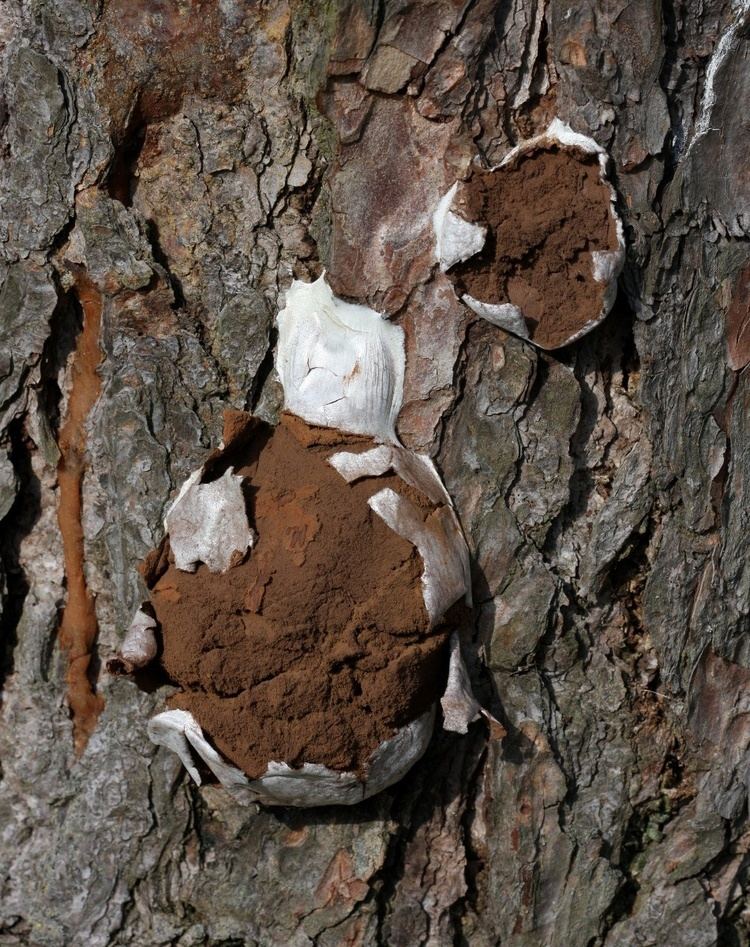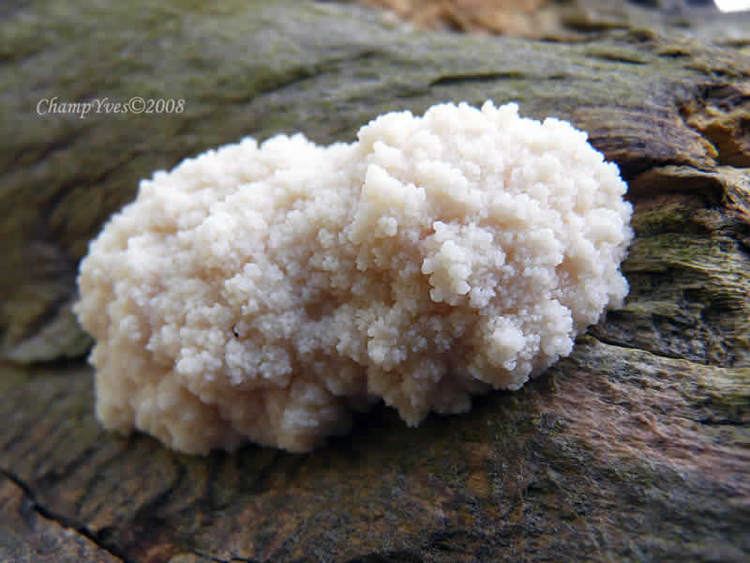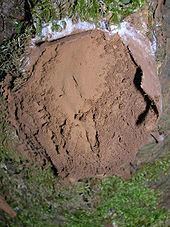Scientific name Enteridium lycoperdon Order Liceida | Genus Enteridium Rank Species | |
 | ||
Similar Enteridium, Lycogala, Fuligo, Didymium, Lycogala epidendrum | ||
Reticularia lycoperdon syn enteridium lycoperdon
The False Puffball, Enteridium lycoperdon, is one of the more obvious species of slime mould or Myxogastria, typically seen in its reproductive phase as a white 'swelling' on standing dead trees in the spring, or on large pieces of fallen wood. Alder (Alnus glutinosa) is a common host.
Contents
- Reticularia lycoperdon syn enteridium lycoperdon
- Habitats and distribution
- Feeding
- Life cycle
- Spores
- Insect associates
- Edibility
- Folklore
- References

Habitats and distribution
E. lycoperdon grows typically on dead alder branches, logs, and stumps in wet places beside rivers, streams and wetlands; it is also found growing on dead elm, beech, poplar, hawthorn, elder, hornbeam, hazel, and pine trees often after late frosts in spring and in the autumn.
It is recorded throughout Scotland, England, Wales, Ireland, Europe, and in Mexico.
Feeding

The plasmodial phase feeds by phagocytosis upon bacteria, fungi, moulds, yeasts, inorganic particles and spores. If conditions become too dry, the plasmodium changes into a sclerotium, a dry and dormant state, awaiting the return of wet conditions.
Life cycle
The slime mould has two phases to its life cycle: an actively feeding plasmodial stage and a reproductive sporangial stage.

The plasmodial phase is mobile and is multi-nucleate, formed by the fusion of single cells and typically amoeboid in its movements, through cytoplasmic streaming.
The sporangial or aethalial phase of this slime mould is spherical, elongate or globular, 50 to 80 mm, and is at first highly glutinous in appearance, resembling small slug eggs. Later a smooth white and silvery surface develops, which eventually splits to expose a brown spore mass beneath. An aethalium is a term relating to slime moulds, referring to the relatively big, plump, pillow-shaped fruiting body, formed by the aggregation of plasmodia into a single functional body. The term comes from the Greek for thick smoke or soot; so named from the smokelike spores.
Spores
The spores are brown, subglobose or ovoid, punctate (spotted), 5–7 µm in size and dispersed by wind and rain until only a few delicate threads of the sporangium remain, resembling soft foam padding.
Insect associates
A slime mould fly, Epicypta testata, is known to lay its eggs within the spore mass and puparia can be seen with their tips protruding. The adult fly lays its eggs within the plasmodial phase, feeding upon it and the larval phase then hatches as worm-like larvae which pupate and then hatch, carrying and dispersing some of the spores which have stuck to them.
Edibility
Though not generally considered edible, E. lycoperdon is not toxic. In Veracruz, Mexico, the very young aethalia are collected, fried, and eaten.
Folklore
E. lycoperdon is named "caca de luna" or "Moon's excrement" by the locals in the state of Veracruz in Mexico. Slime moulds are one of several likely causers of the phenomenon known as star jelly.
